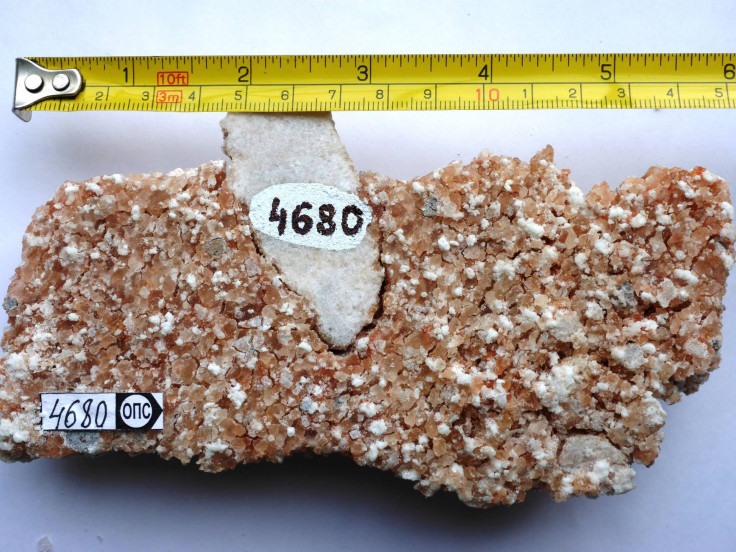2-Billion-Year-Old Salt Rocks Show How Earth Got More Oxygen To Support Life

Ancient crystallized salt rocks, estimated to be around 2 billion years old, were discovered by scientists, who say they provide evidence of how oxygen levels rose on Earth billions of years ago. The sea salt rocks, which were excavated from a 1.2-mile deep hole in Russia, provide clues that the Great Oxidation Event, which occurred around 2.3 billion years ago and saw an increase in oxygen levels, was much more significant than previously thought.
The ancient crystallized salt rocks were the remnant of ancient, evaporated seawater. Although such specimens would normally have easily dissolved and washed away over time, in this case, the sea salt rocks were extremely well-preserved, buried deep underground. According to a new study by an international team of researchers, the prehistoric rocks provide “unprecedented” clues about the compositions of the Earth’s atmosphere and its oceans, around 2 billion years ago.
“Instead of a trickle, it was more like a firehose,” Clara Blättler, a postdoctoral research fellow at Princeton and first author of the new study, said in a statement. “It was a major change in the production of oxygen.”
The excavated salt rocks are essentially mineral deposits, which contained a surprisingly huge amount of a seawater component called sulfate. According to researchers, this is the primary indicator of the increasing oxygen production at that time. This is because sulfate was created when sulfur interacted with oxygen.
“This is the strongest ever evidence that the ancient seawater from which those minerals precipitated had high sulfate concentrations reaching at least 30 percent of present-day oceanic sulfate as our estimations indicate,” said Aivo Lepland, a researcher at the Geological Survey of Norway, a geology specialist at Tallinn University of Technology, and senior author on the new study. “This is much higher than previously thought and will require considerable rethinking of the magnitude of oxygenation of Earth’s 2-billion year old atmosphere-ocean system.”
According to geology experts, oxygen appeared in the Earth’s atmosphere around 2.4 to 2.3 billion years ago. Researchers believe the emergence of oxygen was caused by cyanobacteria capable of photosynthesis, effectively capable of taking in carbon dioxide and then producing and emitting oxygen. However, until now, scientists are still uncertain about whether this escalation in oxygen levels was a gradual process that took millions of years, or a more rapid event.
“It has been hard to test these ideas because we didn’t have evidence from that era to tell us about the composition of the atmosphere,” Blättler said.
According to John Higgins, assistant professor of geosciences at Princeton, who provided interpretation of the geochemical analysis of the salt rocks, the unique qualities found in the specimens are invaluable because of their ability to help researchers piece together a clearer picture of the events that followed the Great Oxidation Event.
“This is a pretty special class of geologic deposits,” Higgins said. “There has been a lot of debate as to whether the Great Oxidation Event, which is tied to increase and decrease in various chemical signals, represents a big change in oxygen production, or just a threshold that was crossed. The bottom line is that this paper provides evidence that the oxygenation of the Earth across this time period involved a lot of oxygen production.”
The new research is expected to help researchers develop new models that can better explain the events that unfolded after the Great Oxidation Event. “There may have been important changes in feedback cycles on land or in the oceans, or a large increase in oxygen production by microbes, but either way it was much more dramatic than we had an understanding of before,” Blättler said.
The new study "Two-billion-year-old evaporites capture Earth’s great oxidation" was published in the journal Science on March 22.
© Copyright IBTimes 2024. All rights reserved.





















